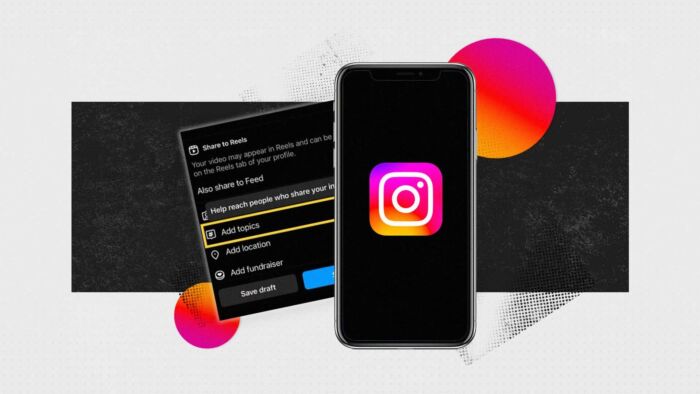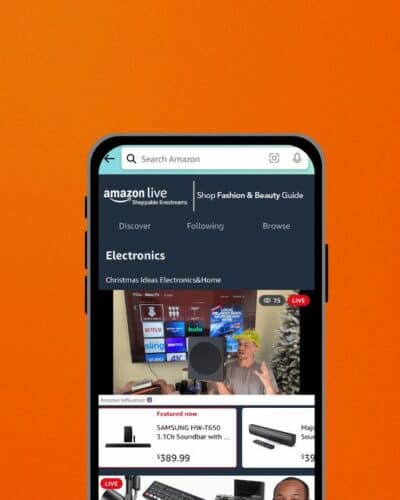One thing us brand marketers must always keen an eye on is the Instagram advertising rules. Meta is always updating its legislation around advertising to keep in line with regional laws prohibiting certain content, and material.
But what does Instagram’s advertising guidelines say in 2023? And how can brands ensure they are marketing within the confines of the law?
Let’s find out.

Contents
What are the full Instagram advertising guidelines?
Advertising guidelines for influencer marketing
What is prohibited within Instagram advertising regulations?
Consequences of breaking Instagram advertising rules
5 Simple Tips to Ensure Your Brand Follows Advertising Guidelines
What are the full Instagram advertising guidelines?
Meta defines branded content as a creator or publisher’s content that features or is influenced by a business partner for an exchange of value – monetary payment or gifted items for example.
Instagram advertising rules state that branded content can only be posted with the use of the branded content tool, where creators must tag featured third-party products, and the brand or business partner with their prior permission.
Creators and brands must comply with all of Meta’s laws and regulations around advertising. But how can brands ensure they are operating within Instagram advertising laws in 2023? And what are the impacts of new regulations of influencer marketing?
Advertising guidelines for influencer marketing
Brands looking to sponsor influencer content on Instagram must meet the platform’s strict guidelines, which include:
Format restrictions
Brands must ensure that all branded content is posted where Meta’s branded content tool is available, on Instagram this would be across Stories, Reels and in-feed posts. Influencer content must avoid including pre-, mid- or post-roll ads within video or audio content. All branded content must avoid the use of banner ads too. Finally, title cards cannot be shown within the first three seconds of a video. Cards used outside of the first three seconds, such as mid cards or end cards, just last longer than three consecutive seconds and must not be included within Instagram’s Stories feature.
Restricted content
Influencer content promoting or referencing alcohol must comply with all applicable local laws, licenses, and approvals, and must include age and country targeting criteria. Content must be age restricted to 18 years or over in all permitted countries.
Content promoting subscription services, or products that include negative options, automatic renewal, free-to-pay conversion billing products or mobile marketing must follow all regional and local laws. Content must also remit age-gated ti 18 years and above.
Influencers promoting credit cards, loans or insurance services must be targeted to people aged 18 and over. Posts must not mislead or promote deceptive services related to student loan consolidation, forgiveness or refinancing.
Content promoting cosmetic surgery, procedures, weight loss products or weight loss services must be targeted to those aged 18 or above.
Branded content around family planning and contraception must focus on the features of the product, and not on sexual pleasure or sexual enhancement. Content promoting these products or services must be targeted to users aged 18 or above.
What is prohibited within Instagram advertising regulations?
Instagram advertising rules prohibit promotions around certain goods, services or brands, including:
- Violations of Instagram Community Guidelines
- Illegal products or services
- Tobacco product, vaporisers, electronic cigarettes or any other product that simulates smoking
- Drugs and drug-related products, including illegal or recreational drugs
- Unsafe products and supplements, such as anabolic steroids and other human growth hormones
- Weapons, ammunition or explosives
- Adult products or services outside of family planning and contraception
- Payday loans, payslip advances and bail bonds
- Multi Level marketing
- Initial coin offerings, binary options or contract for difference trading
- Controversial political or social issues or crises in an exploitative manner for commercial purposes
- Regional lotteries
- Native portrayal of voting or census participations in the US and/or advising users not to vote or participate in a census
These guidelines are strictly prohibited on Instagram. Brands promoting these features run the risk of being banned from advertising on Instagram.
Consequences of breaking Instagram advertising rules
Failing to meet Instagram advertising rules would result in a violation of the platform’s community guidelines. Instagram states that violations of its guidelines can result in the removal of entire posts if either the imagery or associated captions have been flagged. Instagram can also opt to disable accounts that go against its guidelines and terms of service, which usually occurs after multiple violations of the rules and regulations.
Content that has violated Instagram’s Community Guidelines will appear as a notification in-app. The removal is also listed in Account status, which can be checked at any time.
Those that don’t follow the rules run the risk of losing the content they post, and losing their Instagram account entirely.

5 Simple Tips to Ensure Your Brand Follows Advertising Guidelines
Brands should ensure their marketing efforts are aligned with the Instagram advertising rules. Fortunately, we’ve gathered a few helpful tips that brands can follow to make sure they’re operating within the Instagram guidelines.
1. Check the regulations in your target country
The advertising rules on Instagram vary from region to region. Brands should check the las applicable to the region they are advertising in prior to the launch of any marketing activity or campaigns.
For example, the Australian government’s Therapeutic Good Administration (TGA) recently introduced new regulations that prohibit influencers from being paid to endorse health, cosmetic and skincare goods. Legislation like this could severely impact beauty and cosmetic brands looking to target an Australian demographic if the necessary research hasn’t been taken.
2. Monitor influencer marketing campaigns to ensure they are using the correct declarations
Whether they’re promoting a new line of teeth whitening toothpaste, tech products, or a charitable cause, influencers are required to declare any paid partnerships with brands on Instagram. This means brands must ensure that their partnered influencers are offering full disclosure, which can be done by tagging a post as ‘paid partnership’, including #AD in the post copy, and tagging the brand they’re working with in the post.
3. Ensure your adverts aren’t using misleading filters
In the UK, influencers are prohibited from using filters as a part of paid partnerships on Instagram. The Promoting Requirements Authority has prohibited brands from using filters. The ASA ruled that if filters boost the effect of a skin or cosmetic product, it shouldn’t be used even if the filter’s name is seen on Instagram. The use of filters has, in the past, been labeled as a means of deceiving consumers into purchasing products promoted by influencers on Instagram.
Although filters are legal in other territories, brands using them in advertising are still susceptible to scrutiny as they are said to exaggerate the effects of products, particularly with skincare and beauty products.
4. Keep records of all sponsored content and ads
Instagram advertisers should maintain records of influencer partnerships, sponsored content, and advertisements for several reasons. Outside of better campaign measurement and improving ROI, a history of records ensures transparency and compliance with Instagram’s advertising regulations, reducing legal risks and ultimately preventing the loss of a brand account.
5. Keep yourself up to date
In any case, brands should keep up to date with the laws and regulations. Meta is known to alter its advertising policies regularly, so it is vital for brand marketers to keep tabs on routine updates and changes to the legislation.
Concluding thoughts – Instagram advertising
Keeping in line with Instagram’s advertising rules is paramount for brands in 2023. This involves complying with strict guidelines on format, content, and prohibited categories. Failure to do so can result in content removal and even the disabling of brand accounts. Here are our top five takeaways for brands looking to navigate these regulations effectively:
- Research regional laws and regulations.
- Ensure influencers disclose paid partnerships.
- Avoid misleading filters in advertising.
- Maintain records of sponsored content and ads.
- Stay updated on evolving Instagram policies.
By following these steps, brands can not only avoid potential penalties but also build trust and credibility with their Instagram audience.
—
Are you a brand looking to scale using Instagram marketing? At Goat we have over eight years experience in delivering successful Instagram marketing campaigns. Whether it’s social media management, influencer campaigns, or social creative you’re after, we’re here to help! Get in touch today.





